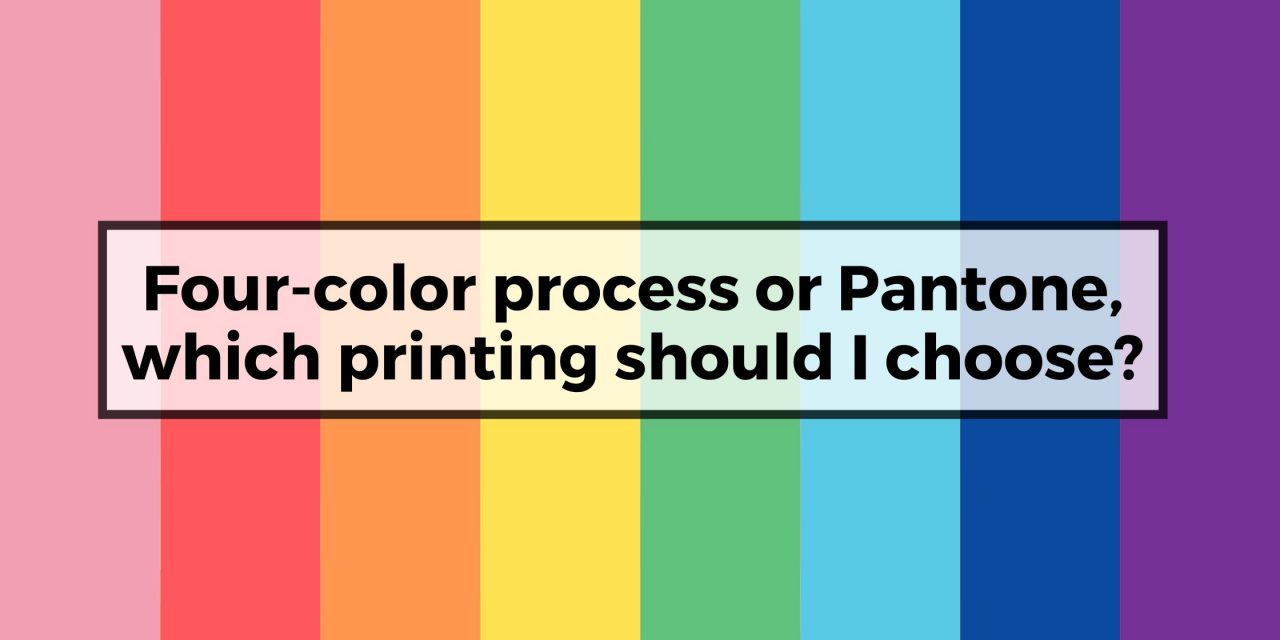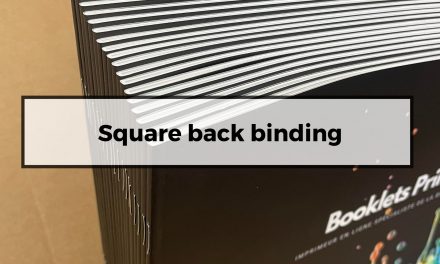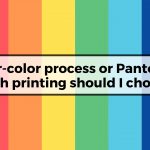If you are considering printing your booklets or some graphic designs, you will have to choose between two color options: 4-color printing or pantone printing.
If these terms sound foreign to you, this article will explain the difference between these two color printing methods. Although the difference is not visible with the eyes but it does have an impact on the final result and pricing.
SOME EXPLANATIONS..
- 4-color process
The 4-color process is based on the fusion of four colors presented under the acronym CMYK: Cyan, Magenta, Yellow and Black. The juxtaposition of variable percentages of these colors in tiny points makes it possible to benefit from nearly 16 000 000 different colors thanks to multiple combinations. This technique is the most common and applicable for all your projects whether it is in the press, literature or advertising posters.
- The pantone
The Pantone impression leans on 14 basic colors and is obtained though a mix realized before the impression of the document. The shades are categorized in a pantone color chart. Compared to the 4-color process, this technique guarantees a better final result with precise and pronounced shades. It is often used for projects where a specific graphic charter must be respected.
ADVANTAGES AND DISADVANTAGES OF THESE TECHNIQUES
The technique of the 4-color printing is the most economic and fast option. It allows a large variety of colors for printing. It is ideal for large quantities or tight budgets. However, it should be noted that this method can lack precision, producing pale or dull colors.
As for Pantone printing, it offers clean and reliable colors, guaranteeing a quality superior to that of CMYK process with perfect flat tints. Ideal if you wish to respect a graphic charter, this technique, usable on all the supports, allows to reach very specific colors such as the metallic inks. It offers the possibility of using all types of supports even the nonabsorbent ones. Unfortunately, the important cost of impression constitutes the greatest constraint of this technique because of the high price of the Pantone inks (much higher than that of the CMYK inks).

WHY CHOOSE ONE OPTION OVER THE OTHER?
The choice between these two printing methods depends on several criteria such as the number and type of colors used, the level of quality expected and the budget allocated to the project. It is possible to integrate at least one Pantone color in a design in CMYK.
Now that these two techniques have no secrets for you, which one do you want to choose for your next project?
Do you have a brochure to print? Or just an idea for a project? Visit our website and if there is still a question, click here to contact us.










